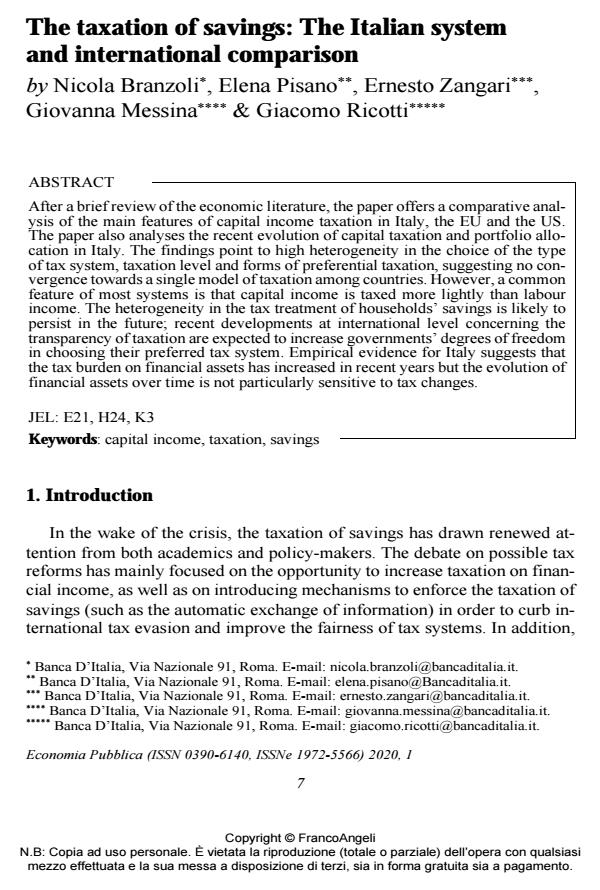The taxation of savings: The Italian system and international comparison
Journal title ECONOMIA PUBBLICA
Author/s Nicola Branzoli, Elena Pisano, Ernesto Zangari, Giovanna Messina, Giacomo Ricotti
Publishing Year 2020 Issue 2020/1
Language English Pages 48 P. 7-54 File size 329 KB
DOI 10.3280/EP2020-001001
DOI is like a bar code for intellectual property: to have more infomation
click here
Below, you can see the article first page
If you want to buy this article in PDF format, you can do it, following the instructions to buy download credits

FrancoAngeli is member of Publishers International Linking Association, Inc (PILA), a not-for-profit association which run the CrossRef service enabling links to and from online scholarly content.
After a brief review of the economic literature, the paper offers a comparative analysis of the main features of capital income taxation in Italy, the EU and the US. The paper also analyses the recent evolution of capital taxation and portfolio allocation in Italy. The findings point to high heterogeneity in the choice of the type of tax system, taxation level and forms of preferential taxation, suggesting no convergence towards a single model of taxation among countries. However, a common feature of most systems is that capital income is taxed more lightly than labour income. The heterogeneity in the tax treatment of households’ savings is likely to persist in the future; recent developments at international level concerning the transparency of taxation are expected to increase governments’ degrees of freedom in choosing their preferred tax system. Empirical evidence for Italy suggests that the tax burden on financial assets has increased in recent years but the evolution of financial assets over time is not particularly sensitive to tax changes.
Keywords: Capital income, taxation, savings
Jel codes: E21, H24, K3
- Taxation of capital gains upon accrual: is it really more efficient than realisation? Giampaolo Arachi, Massimo D'Antoni, in Fiscal Studies /2022 pp.39
DOI: 10.1111/1475-5890.12255
Nicola Branzoli, Elena Pisano, Ernesto Zangari, Giovanna Messina, Giacomo Ricotti, The taxation of savings: The Italian system and international comparison in "ECONOMIA PUBBLICA " 1/2020, pp 7-54, DOI: 10.3280/EP2020-001001